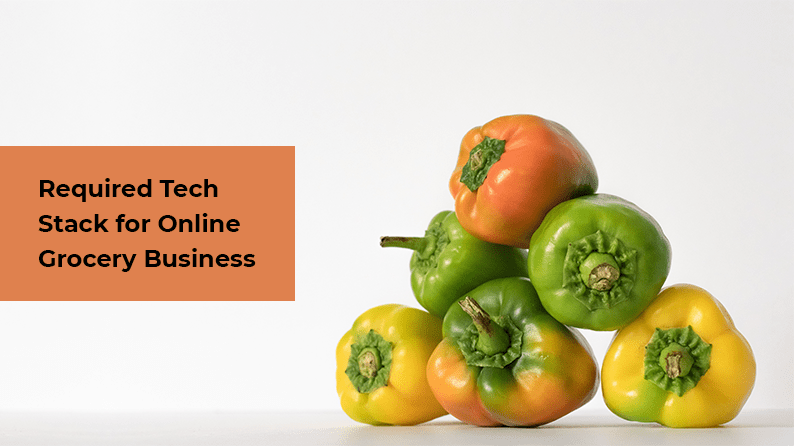Choosing the right technology stack for the development of an eCommerce grocery marketplace solution is crucial. Entrepreneurs and startups should equip themselves with the knowledge of various technology stacks in order to make their businesses scalable.
Below we present information on technology stack (LAMP Stack) which is most commonly used across the world to develop marketplaces & web applications.
What Is a Tech Stack?
A tech stack is a technology infrastructure that is used to build and run a web application. It consists of all the software products, programming languages, database, and webserver. The two main components of technology stack are:
- Back-End Technology Stack
- Front-End Technology Stack
Back-End Technology Stack
Powers the grocery website or the application from the server-side. It is not visible to the users and consists of:
- Programming Language: It is used to build the logic of the website via code.
- Database: This is used to store the data.
- Webserver: Serves the request of the user.
Front-End Technology Stack
As the name suggests, it forms the visuals of the grocery marketplace or the web application and so is known as the front-end (client-side) technology stack. It includes:
- JavaScript and JQuery: Front-end programming languages that allow users to interact with the marketplace/web application.
- HTML(Hypertext Markup Language) and CSS (Cascading Style Sheets): Determine the display of the web page content on the user’s browser.
As formerly mentioned, LAMP stack is the most popular technology stack used globally. Let’s dive in to understand the reason behind its popularity.
Introduction to LAMP Stack
LAMP stack is one of the first technology stacks that became popular for its reliability & ease of accessibility. It includes the following components:
- Linux: Operating System
- Apache: Webserver
- MySQL: Database
- PHP: Server-side Programming Language
Linux
Linux is a free and open-source operating system (OS). It is popular because it offers more flexibility and configuration options than other operating systems.
To Know More About Technology Stack of Grocery Business
Apache
Apache webserver processes requests. It serves up web assets via HTTP so that the application is accessible to anyone in the public domain over a simple web URL. Developed and maintained by an open community, Apache handles a large volume of web traffic without hampering network speed.
MySQL
MySQL is an open-source relational database management system that is used for storing terabytes of application data.PHP
PHP is an open-source programming language that works with Apache in creating dynamic web pages. PHP is designed for efficiency and it makes programming easier.
Advantages of LAMP:
Besides providing high performance delivering web applications, LAMP stack has the following advantages:
- Updated and Secure
- Cost-effectiveness
Updated and Secure
LAMP stack is based on an open-source development model. This means that developers from around the world contribute to making LAMP and its components. It is the most secure and updated platform for others to build on.
Cost-Effectiveness
LAMP stack is one of the world’s most popular web development platforms. Hence, it’s easier to get developers to work using this which reduces the maintenance and enhancement cost as compared to other technologies.
Conclusion
Choosing the right technology behind an online grocery marketplace is a significant factor contributing to its success. Being familiar with the intricacies of web development is crucial for an entrepreneur who is looking to build an eCommerce grocery Marketplace.






